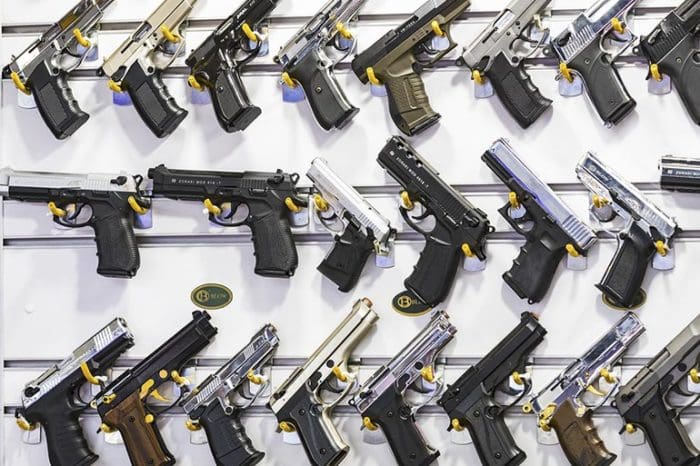We know, it’s not easy out there. We’re living in a Golden Age of carry handguns. An aspiring gun carrier has to choose from dozens of options; a bewildering selection of brands, calibers, barrel lengths, and actions. Most of them are very good and will treat you extremely well.
Gun store salesmen, however, are notoriously bad at cutting through all the clutter and helping customers make a decision. But it doesn’t have to be that way.
I’m going to give you one choice to make. That’s it. Only one. Once you make that choice, I’ll tell you what to buy.
There are plenty of worthwhile alternatives to the guns below, but you won’t have to worry about that. Yes, readers, gun store salesmen and your gunny friends will howl at this. Don’t worry about any of that. You won’t regret taking my advice.
One more thing: if you shoot a lot and expose yourself to new and different guns, shooting techniques and carry methods, you may outgrow this first carry gun (although it will still be extremely useful). That’s OK.
If you don’t — and there’s no law that says you have to — that’s OK, too.
1. The gun
Here’s your one and only choice: semi-automatic pistol or revolver?
A semi-automatic pistol has a “magazine” that you fill with bullets (gun people call them “cartridges,” but don’t worry about that) and stick into the handle of the gun. After that, you “rack the slide” (pull the top part back) to load the gun. Done. You’re ready to go.
Advantages: Semi-automatic pistols are slim and hold more bullets than revolvers. You can carry an extra magazine to re-load the gun if you have to. They have relatively easy-to-pull triggers, which makes them easier to shoot accurately.
Disadvantages: You have to fill the magazine with bullets, stick it into the gun and “rack the slide” to load the gun. It’s easy enough, but some people find all that gun handling intimidating. Semis have relatively easy-to-pull triggers, which makes it easier to shoot the gun accidentally.
A revolver (as above) has a round-ish cylinder that you open and fill with bullets. You then close the cylinder and you’re done.
Advantages: Revolvers are easy to load. Their heavier trigger pull adds an extra layer of safety; you’re less likely to pull it unless you really want to.
Disadvantages: The cylinder sticks out a bit, making revolvers slightly bulkier than a semi and a little more difficult to conceal. Until and unless you practice reloading (a lot), you won’t be able to reload a revolver easily or quickly under stress. The heavier trigger makes revolvers more difficult for a new shooter to shoot accurately than a semi.
OK…choose one.
Now go out and buy either a SIG SAUER P365 semi-automatic pistol (top image, reviewed by TTAG here) or a Ruger LCR revolver in .38 Special (TTAG review of .357 version here).
2. Ammunition
The SIG P365 semi-automatic pistol holds 10 9mm bullets in its magazine. The Ruger LCR holds five .38 caliber bullets and no more.
Buy four boxes of any type of “full-metal jacket” ammunition (a.k.a., “regular” or range ammo) and one box of any kind of “hollow-point” or personal defense ammunition in the appropriate caliber for your gun. The first type of ammo is for practice, the second for carrying.
If you don’t plan on practicing (and you really should, as much and as regularly as possible) and/or when you’re ready to carry your gun, load it with the hollow points.
3. Holster
When carrying a gun always carry it in a holster. If you’re a guy, buy a DeSantis Nemesis Holster. For now, that’s where you’re going to carry your gun; inside your pants pocket. If you’re a woman who wears pants, do the same.
If you’re a woman who wears thin dresses, also buy a ComfortTac Belly Band Holster or carry your gun in the DeSantis pocket holster “off-body” (i.e., in a purse or handbag). Off-body carry is not recommended. It’s difficult to extract your gun in an emergency and you could lose or lose sight of your bag.
4. Safe
Your gun belongs in one of two places: on your person or in a safe. Not in your desk drawer, by the bedside or under a pillow. On your person or in a safe.
Buy a GunVault Mini Vault Standard Handgun Safe. If you have to disarm to enter a “gun-free zone” like a post office while you’re out and about, lock your carry gun in your car’s glovebox or in an inexpensive small lockable car safe. Do not enter a “gun-free zone” with a gun.
————–
There’s a lot of stuff you should think about when buying a carry gun — information that has nothing to do with the gun, ammunition, holster or safe. Everything from The Four Rules of Gun Safety to licensing, laws and lawyers. From “situational awareness” to shooting techniques.
TTAG’s Guns for Beginners posts have a lot of useful information. And a good training course is always highly recommended. But remember…
You have a natural, civil and Constitutionally protected right to keep and bear arms. Bullets face forward, aim at the bad guy, squeeze the trigger until the threat stops (or the gun’s empty), run, call 911. That’s enough to get you started. So start.
